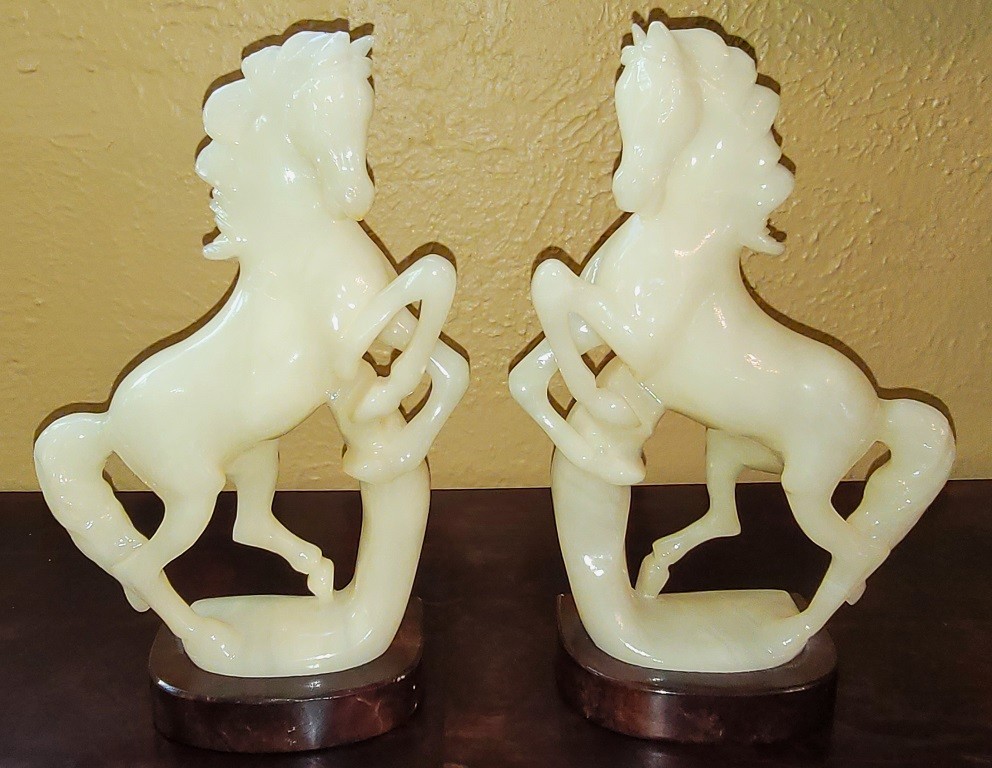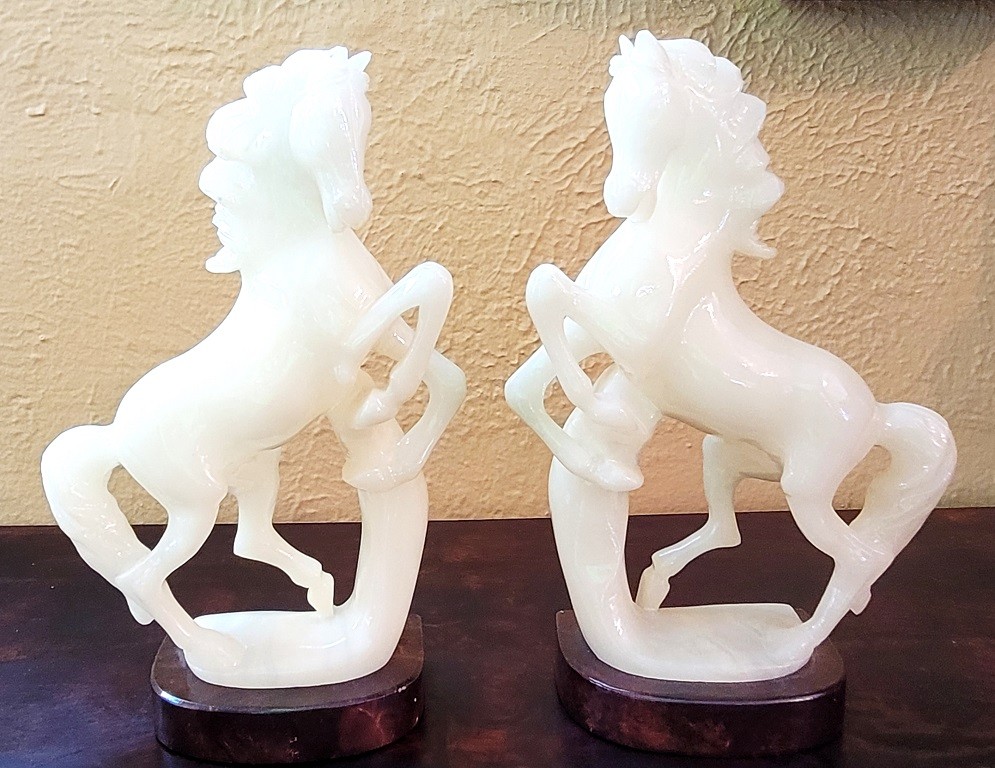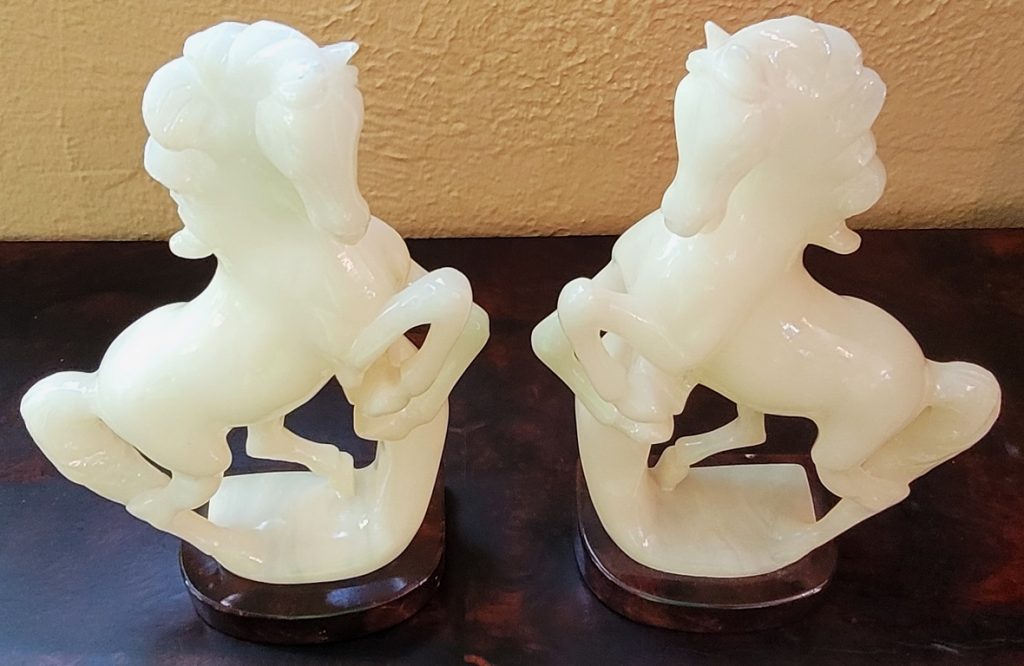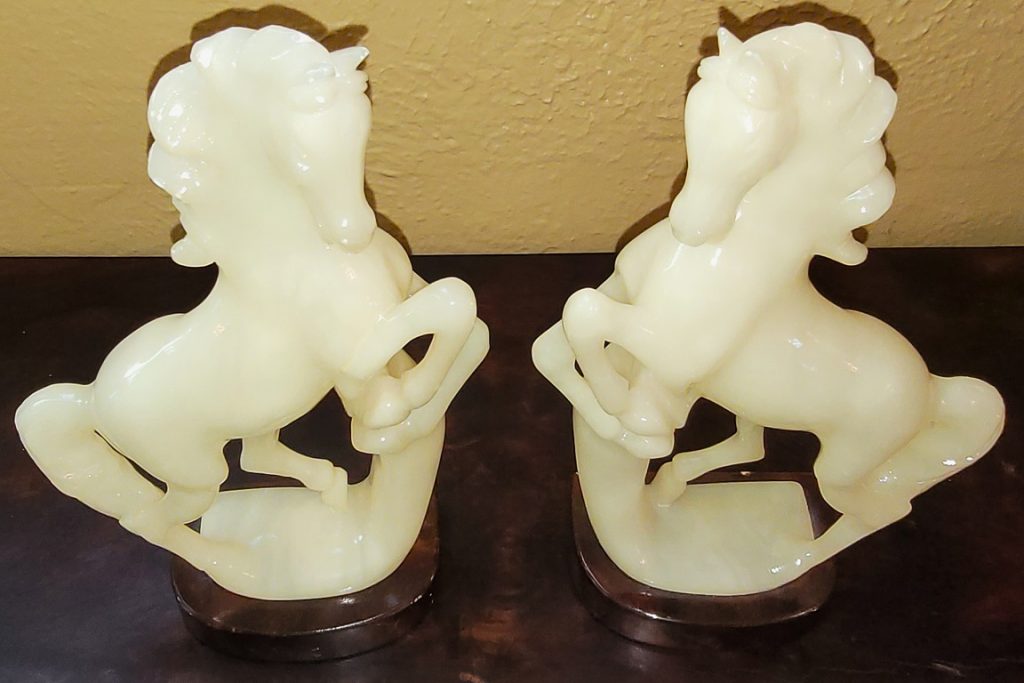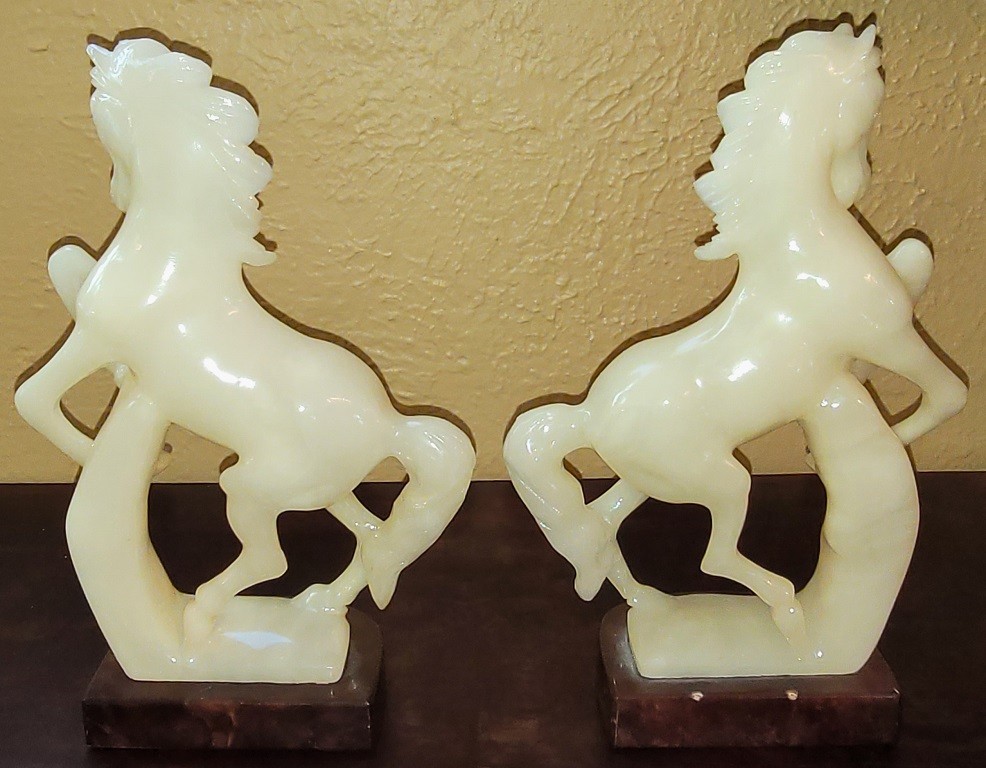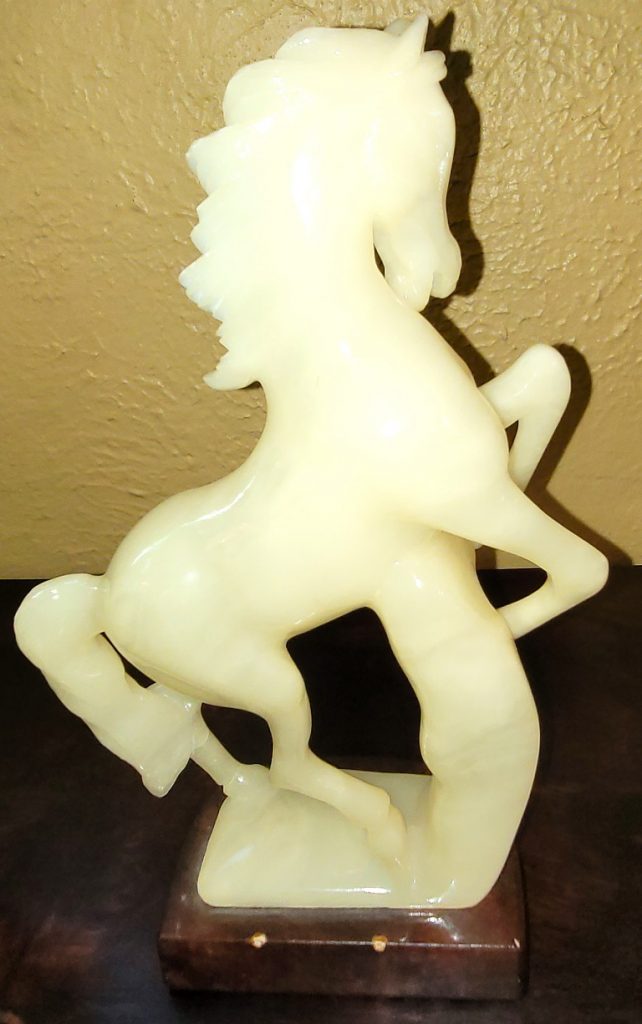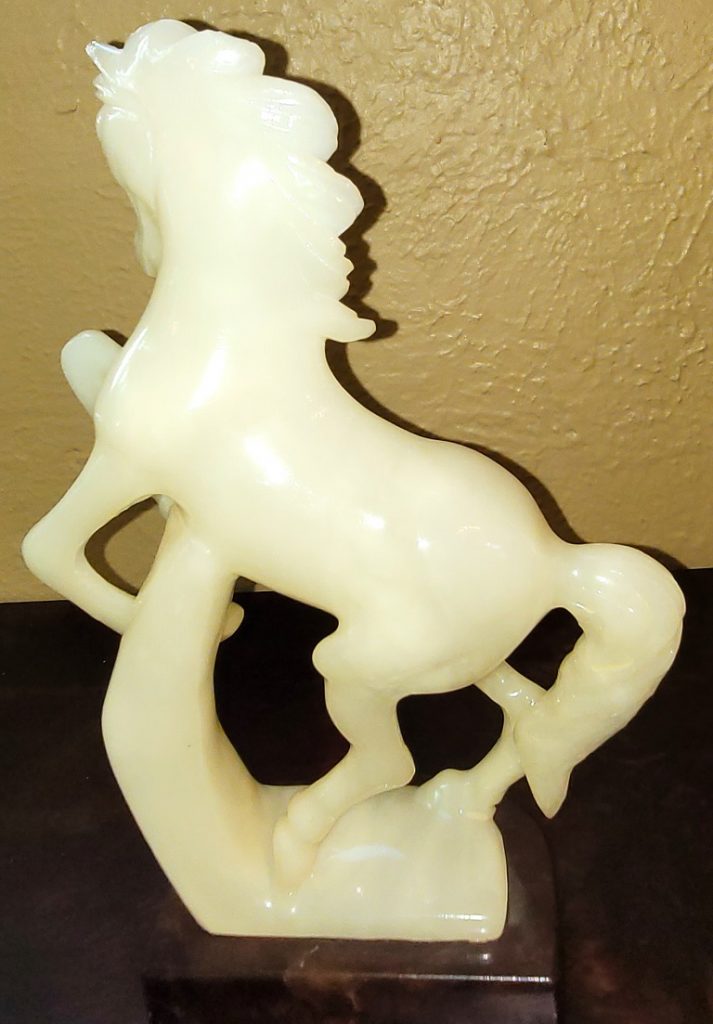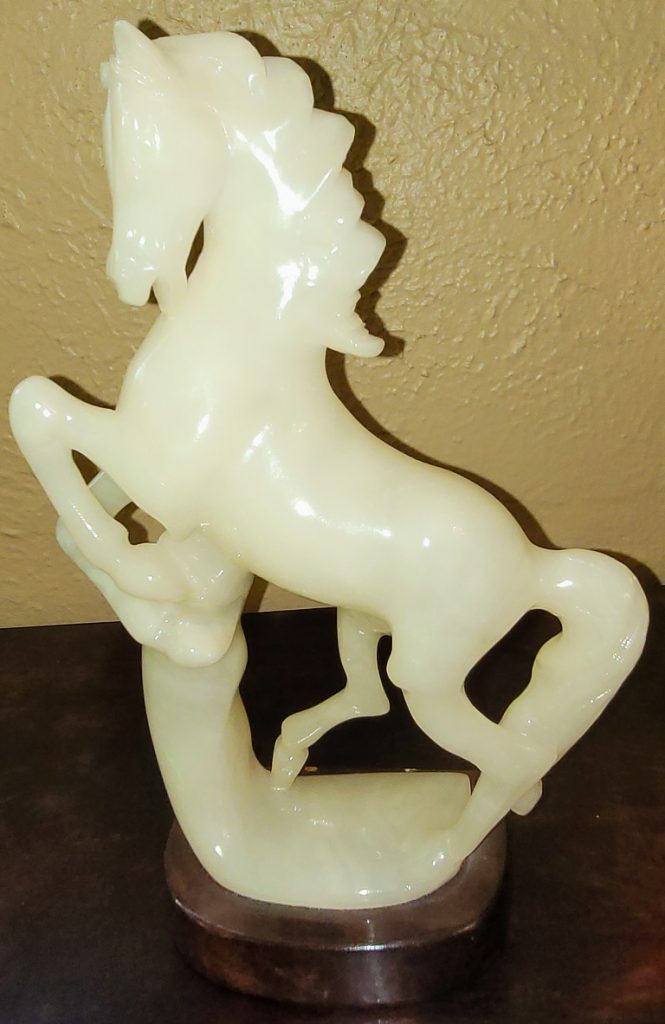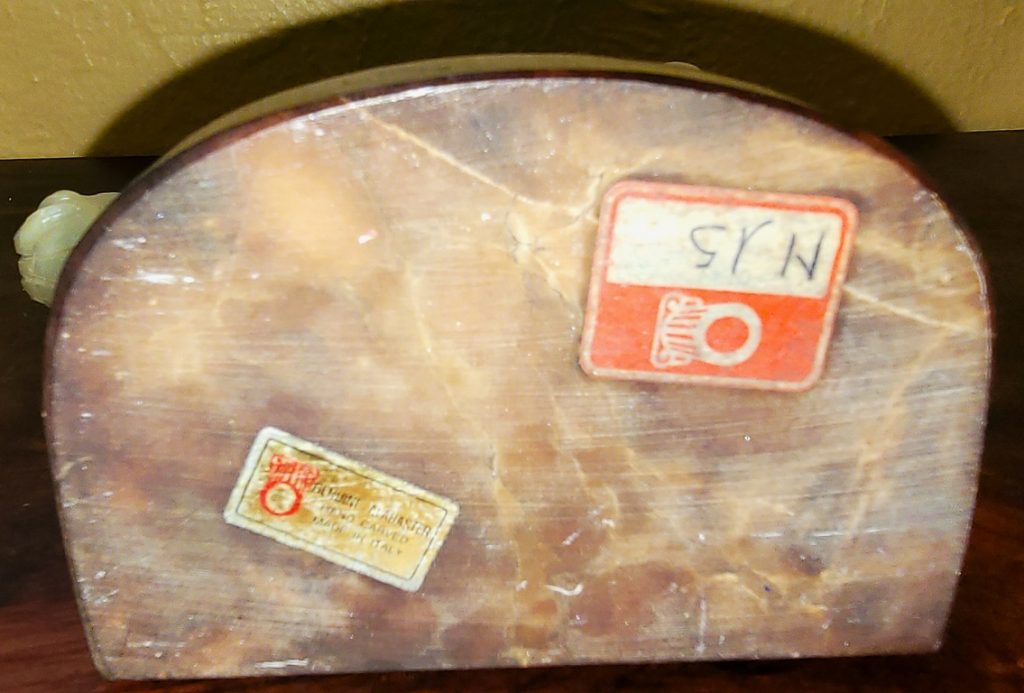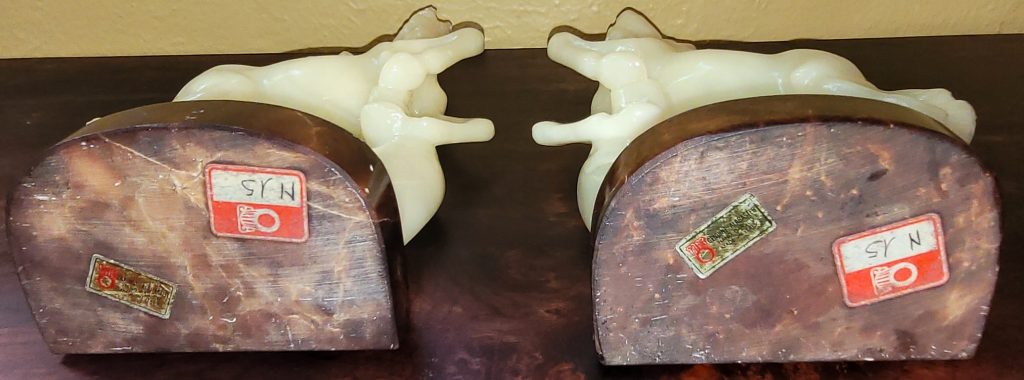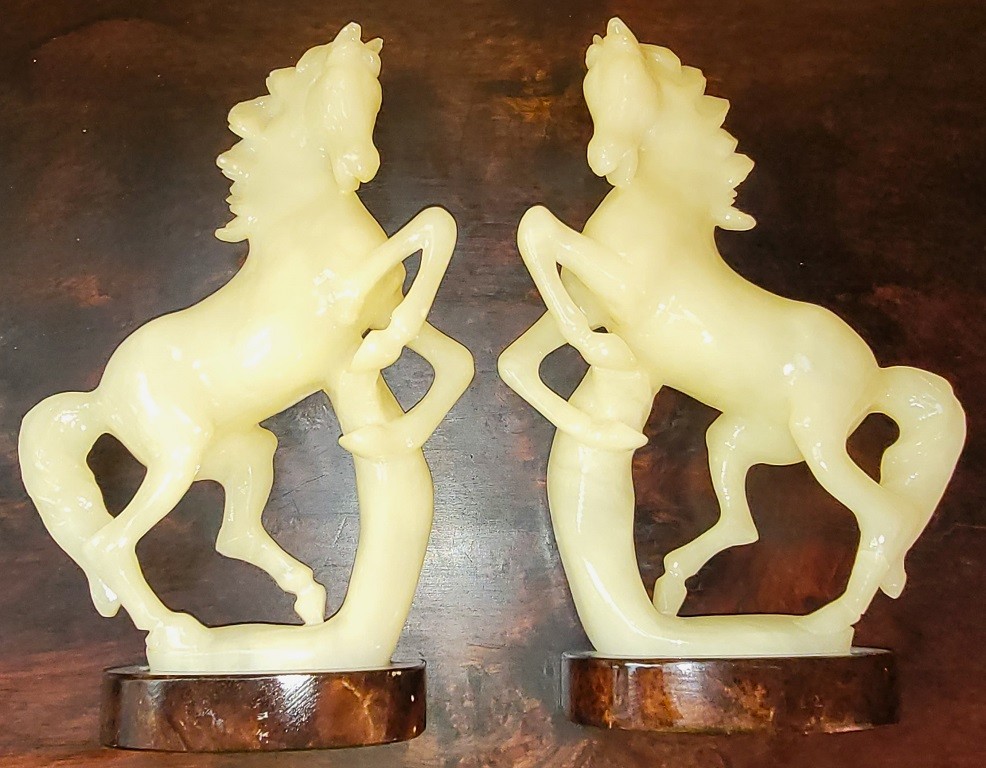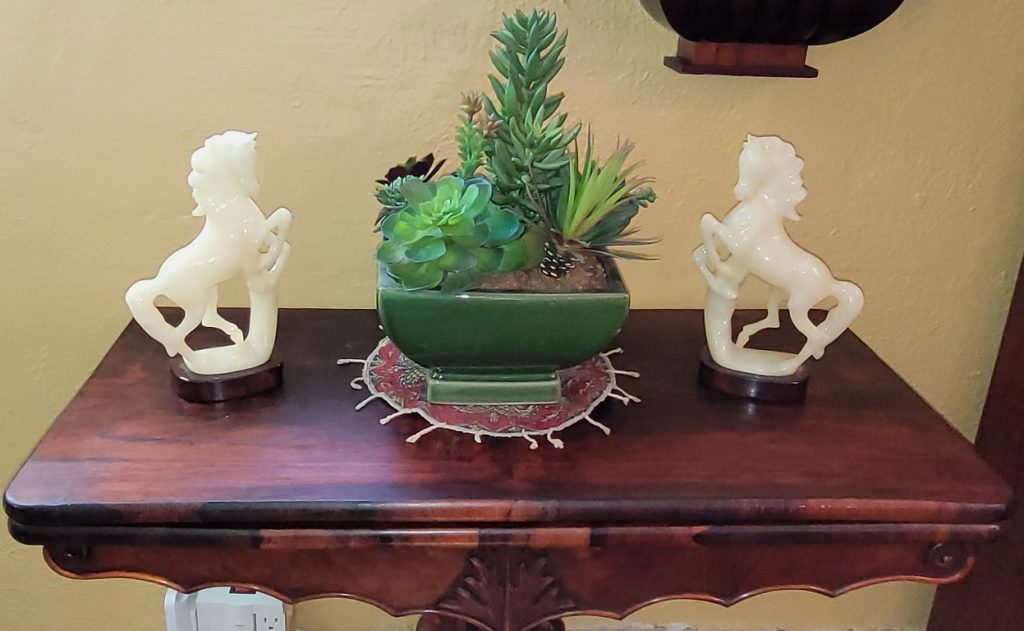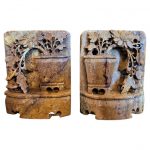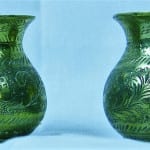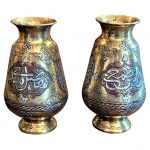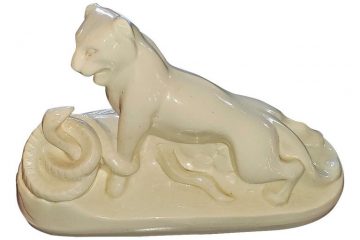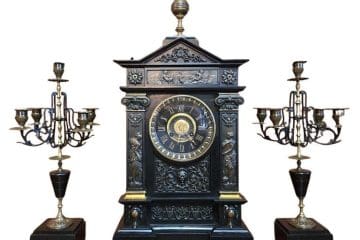Matching Pair of Handcarved Italian Alabaster Horses
PRESENTING A LOVELY Matching Pair of Handcarved Italian Alabaster Horses.
Mid 20th Century circa 1960.
Pair of hand-carved horses that look like ‘Lipizzaner Stallions’ on a faux wood resin base.
Each sculpture facing the other.
Each has it’s original labels on the underside of the base showing their age and that they were Hand Carved Alabaster, Made in Italy.
Lovely detail and no chips, cracks or repairs.
Both have a gorgeous light green hue.
Pair of QUALITY little sculptures !
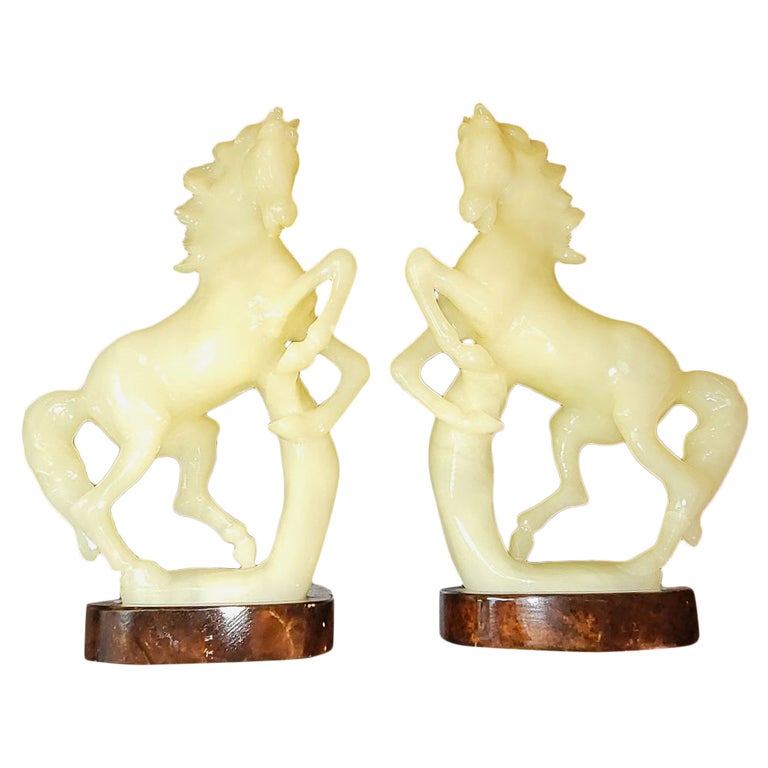
Alabaster is a mineral or rock that is soft, often used for carving, and is processed for plaster powder. Archaeologists and the stone processing industry use the word differently from geologists. The former use it in a wider sense that includes varieties of two different minerals: the fine-grained massive type of gypsum and the fine-grained banded type of calcite. Geologists define alabaster only as the gypsum type. Chemically, gypsum is a hydrous sulfate of calcium, while calcite is a carbonate of calcium.
The two types of alabaster have similar properties. They are usually lightly colored, translucent, and soft stones. They have been used throughout history primarily for carving decorative artifacts.
The calcite type is also denominated “onyx-marble“, “Egyptian alabaster“, and “Oriental alabaster” and is geologically described as either a compact banded travertine or “a stalagmitic limestone marked with patterns of swirling bands of cream and brown”. “Onyx-marble” is a traditional, but geologically inaccurate, name because both onyx and marble have geological definitions that are distinct from even the broadest definition of “alabaster”.Alabaster bust (excluding the head) of Septimius Severus at the Musei Capitolini, Rome
In general, ancient alabaster is calcite in the wider Middle East, including Egypt and Mesopotamia, while it is gypsum in medieval Europe. Modern alabaster is probably calcite but may be either. Both are easy to work and slightly soluble in water. They have been used for making a variety of indoor artwork and carving, and they will not survive long outdoors.
The two kinds are readily distinguished by their different hardnesses: gypsum alabaster (Mohs hardness 1.5 to 2) is so soft that a fingernail scratches it, while calcite (Mohs hardness 3) cannot be scratched in this way but yields to a knife. Moreover, calcite alabaster, being a carbonate, effervesces when treated with hydrochloric acid, while gypsum alabaster remains almost unaffected
Link: https://en.wikipedia.org/wiki/Alabaster
Matching Pair of Handcarved Italian Alabaster Horses.
Provenance: From a Dallas Estate.
Condition: Near Mint.
Dimensions: Each is 9.5 inches tall, 6.25 inches wide and 2.7 inches deep.
SALE PRICE NOW: $600 (Pair)
